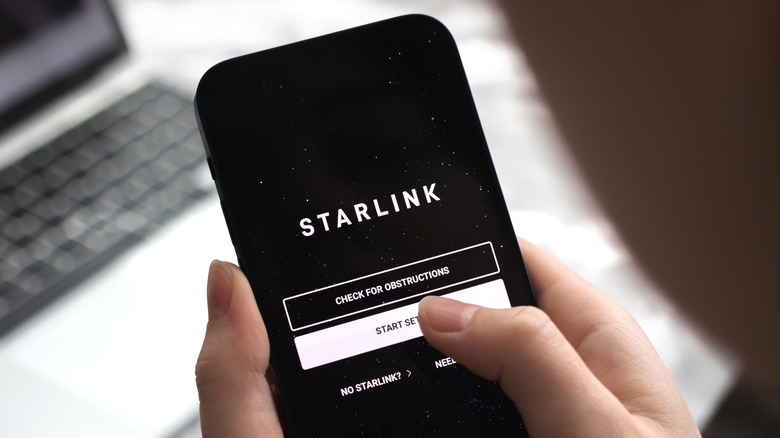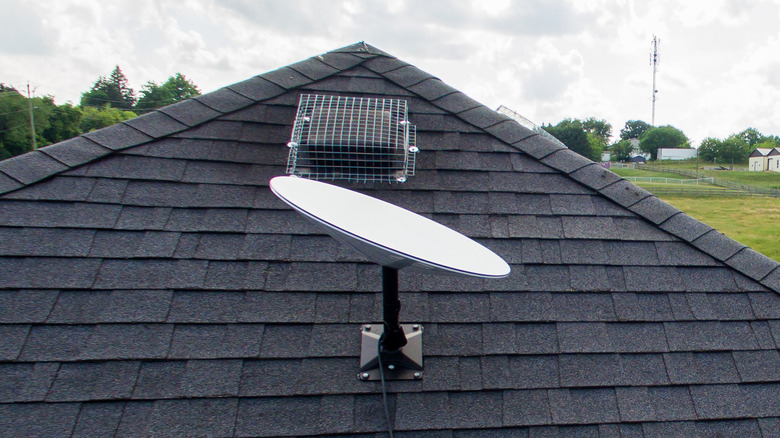Amid The Twitter Chaos, Starlink Quietly Added A Daytime Data Cap
Twitter has been taking up more than its fair share of the news cycle lately, which is perhaps why Starlink decided the very end of the week was a good time to quietly drop details about an upcoming data cap limitation that will impact residential subscribers. Starting next month, Starlink users will face a maximum monthly data limit, after which point they'll have to pay for every extra gigabyte used or settle for slower speeds. The change was revealed in a new policy page on the Starlink website, as well as in an email that went out to customers, which explains that the peak-hours data cap is intended to reduce network congestion and help ensure all customers are having a solid experience.
The decision to add this new data cap comes only a few weeks after Starlink announced its latest product: satellite internet service for airplanes. That particularly expensive subscription joins others designed for RVs and boats, essentially offering high-speed internet access in atypical situations where 4G LTE and 5G aren't an option. Though many people are content with their cable internet service, there's a dire need for high-speed internet access in rural areas. The pandemic highlighted the sluggish expansion of broadband internet into low-population regions, as many people found themselves struggling to work and participate in classes remotely using slow DSL and mobile connections. Starlink may be the solution, but only if it manages its network effectively.
What Starlink residential customers need to know
Starlink residential subscribers in the U.S. and Canada should head over to the company's new Fair Use Policy web page, which describes the steps Starlink takes to manage traffic across its network. Under the Residential Services section, users will find details about a daytime data cap that will, according to the email sent to customers, go into effect for U.S. and Canadian accounts starting in December 2022. Put simply, Starlink says its residential plan is split into two categories: Basic Access and Priority Access. Basic Access essentially refers to the satellite internet experience while it is being throttled, something that may happen when the network is particularly congested. Priority Access, in contrast, is essentially given priority over Basic Access, meaning you can expect faster speeds and better performance during these congested times.
Starting next month, residential customers will have a new Peak Hours policy to stay mindful of; it spans from 7 a.m. to 11 p.m. local time. Each account will get 1TB of Priority Access data every month, assuming it's not on the portable, RV, or Best Effort plans. If you use a full terabyte of data during daytime hours within a single month, you'll have two options: spend the rest of the month on the lower-priority Basic Access tier or pay $0.25 per gigabyte for additional Priority Access data. As such, subscribers who don't want to deal with throttling during congestion or extra fees should schedule their game downloads and other data-heavy activities for after 11 p.m. but before 7 a.m., as data used during those hours doesn't count toward the 1TB monthly data cap.

